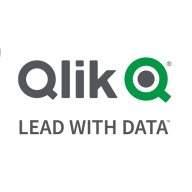

Find out in this report how the two Cloud Data Integration solutions compare in terms of features, pricing, service and support, easy of deployment, and ROI.
I advocate using Glue in such cases.
I conducted a cost comparison with the AWS service provider, and this option is much cheaper than the Kinesis service offered by AWS.
AWS's documentation is reliable, and careful reference often resolves missed upgrade details.
Even priority tickets, which should be resolved in minutes, can take days.
It is beneficial to upgrade jobs, and we conduct extensive testing in development before migrating to production.
Migrating jobs from version 3.0 to 4.0 can present compatibility issues.
With AWS, I gather data from multiple sources, clean it up, normalize it, de-duplicate it, and make it presentable.
It is a core-based licensing, which, especially in the banking industry, results in the system capacity being utilized up to a maximum of 60%.
Costing depends on resource usage, and cost optimization may involve redesigning jobs for flexibility.
AWS charges based on runtime, which can be quite pricey.
Licensing is calculated based on the machine's total capacity rather than actual usage.
For ETL, I feel the performance is excellent. If I create jobs in a standard way, the performance is great, and maintenance is also seamless.
I think if I'm working with big data, common languages like Python work quite nicely, which is advantageous.
Data retrieved from the system can be pushed to multiple places, supporting various divisions such as marketing, loans, and others.


AWS Glue is a serverless cloud data integration tool that facilitates the discovery, preparation, movement, and integration of data from multiple sources for machine learning (ML), analytics, and application development. The solution includes additional productivity and data ops tooling for running jobs, implementing business workflows, and authoring.
AWS Glue allows users to connect to more than 70 diverse data sources and manage data in a centralized data catalog. The solution facilitates visual creation, running, and monitoring of extract, transform, and load (ETL) pipelines to load data into users' data lakes. This Amazon product seamlessly integrates with other native applications of the brand and allows users to search and query cataloged data using Amazon EMR, Amazon Athena, and Amazon Redshift Spectrum.
The solution also utilizes application programming interface (API) operations to transform users' data, create runtime logs, store job logic, and create notifications for monitoring job runs. The console of AWS Glue connects all of these services into a managed application, facilitating the monitoring and operational processes. The solution also performs provisioning and management of the resources required to run users' workloads in order to minimize manual work time for organizations.
AWS Glue Features
AWS Glue groups its features into four categories - discover, prepare, integrate, and transform. Within those groups are the following features:
AWS Glue Benefits
AWS Glue offers a wide range of benefits for its users. These benefits include:
Reviews from Real Users
Mustapha A., a cloud data engineer at Jems Groupe, likes AWS Glue because it is a product that is great for serverless data transformations.
Liana I., CEO at Quark Technologies SRL, describes AWS Glue as a highly scalable, reliable, and beneficial pay-as-you-go pricing model.
Qlik Replicate is a data replication solution for replicating data from one source database to another for business intelligence software. It offers data manipulation and transformations, replication without impacting source databases, and ease of use without needing ETL. The solution is stable and user-friendly, with detailed logging and support.
Qlik Replicate has improved the organization by allowing each team to replicate their data into a single-source data location. The most important feature of Qlik Replicate is its ability to replicate and update records without needing a programmer.
We monitor all Cloud Data Integration reviews to prevent fraudulent reviews and keep review quality high. We do not post reviews by company employees or direct competitors. We validate each review for authenticity via cross-reference with LinkedIn, and personal follow-up with the reviewer when necessary.